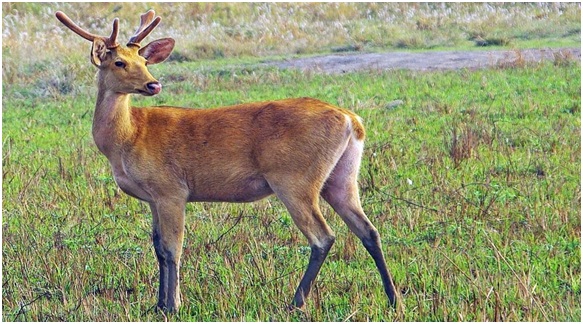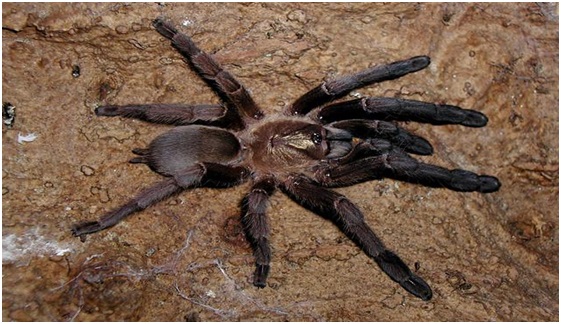Quantum Dots (QDs) (The Hindu)

- 05 Oct 2023
Why in the News?
Moungi G. Bawendi, Louis E. Brus, and Alexei I. Ekimov were recently honored with the 2023 Nobel Prize in Chemistry for their remarkable contributions to the discovery and synthesis of quantum dots.
About Quantum Dots (QDs):
- Quantum dots, often referred to as "artificial atoms," are tiny semiconductor nanoparticles that possess unique optical and electronic properties because of their minuscule size.
- The concept of quantum dots was first theorized in the 1970s and later successfully synthesized in the early 1980s.
- Various semiconductor materials, including cadmium selenide, cadmium sulfide, or indium arsenide, can be utilized to create quantum dots. These nanoparticles exhibit quantum dot properties.
- During the synthesis process, scientists can precisely control the size and composition of quantum dots, allowing for tailored properties suitable for diverse applications.
- Optical Properties: A standout characteristic of quantum dots is their adjustable emission properties. Researchers can finely adjust the wavelength of emitted or absorbed light by manipulating the size of the quantum dot.
- Quantum dots can emit light across the entire visible spectrum and even into the infrared and ultraviolet ranges, providing a broad spectrum of colors for numerous applications.
- The smallest quantum dots emit high-energy waves, resulting in blue light, while larger dots emit lower-energy waves, producing red light, with intermediate sizes generating colors in between.
Applications:
- Displays: Quantum dots are employed in display technology to enhance color and efficiency in devices like TVs, monitors, and other electronics.
- Photovoltaics: Quantum dots can enhance light absorption and energy conversion efficiency in solar cells.
- Biomedical Applications: Due to their small size, quantum dots have versatile applications in areas such as medical imaging, biosensors, and targeted drug delivery.
- Quantum Computing: Quantum dots are under investigation for their potential role in quantum computing as they can function as qubits, the fundamental units of quantum information.
Swamp Deer (NewsOnAIR)

- 05 Oct 2023
Why in the News?
Manas National Park & Tiger Reserve recently shared some good news: The number of swamp deer in the park has increased.
About Swamp deer:
- Swamp deer, also known as barasingha (scientifically called Rucervus duvaucelii), is a type of deer found in the Indian subcontinent.
- They belong to the Cervidae family and are typically spotted in open forests and grasslands across India and Nepal.
- These deer primarily feed on wetland plants and the herbs commonly found in their natural habitat.
- Unfortunately, their population is now limited to isolated areas in Nepal, Assam, and the northern regions of India.
- Swamp deer used to exist in Bangladesh and Pakistan, but they are now extinct in both of these countries.
In the Indian Subcontinent, there are three subspecies of swamp deer:
- Western swamp deer (Rucervus duvaucelii) found in Nepal.
- Southern swamp deer (Rucervus duvaucelii branderi) found in central and north India.
- Eastern swamp deer (Rucervus duvaucelii ranjitsinhi) found in the Kaziranga and Dudhwa National Parks.
In terms of conservation, swamp deer are classified as follows:
- IUCN Red List: Vulnerable
- CITES: Appendix I
- The Wildlife Protection Act, 1972: Schedule I
Bojjannakonda (The Hindu)

- 05 Oct 2023
Why in the News?
Recently, the Central government allocated 7.30 crore rupees to undertake landscaping and develop tourist amenities at the Bojjannakonda site.
About Bojjannakonda:
- Bojjannakonda is situated in the state of Andhra Pradesh.
- It was excavated by Alexander Rim in 1906.
- Originally known as ‘Buddhuni konda’ (meaning hill of the Buddha), it eventually came to be known as ‘Bojjannakonda’ over time.
- Approximately 2,000 years ago, Buddhist monks used this hill for their practices.
- During excavations, various artifacts were unearthed, including a gold coin from the Samudra Gupta period, copper coins from the Chalukya king Kubja Vishnu Vardhan, coins from the Andhra Satavahanas, and pottery.
- Bojjannakonda is unique as it reflects features of all three phases of Buddhism: Hinayana, Mahayana, and Vajrayana.
- Notable discoveries at the site include a figure of ‘Kalabhairava’ with the head of Lord Ganesha adorned with conch shells and the statue of a Buddhist monk named ‘Harati.’
- There is a large double-storeyed cave on the hill with a rectangular doorway flanked by 'dwarapalakas' on both sides.
- At its center stands a rock-cut stupa on a square platform.
- The northern side of the hill features a series of rock-cut caves and monolithic structures on rock platforms.
- The upper cave has a rectangular doorway, with Buddha figures on either side.
- The prominent attractions for tourists at Bojjannakonda are the imposing figures of the Buddha seated in a meditative posture and the stupa.
- At the hill's summit, there are structural buildings and a vihara (monastery), which are now in ruins.
- To the west of Bojjannakonda lies another hillock called Lingalakonda or Lingalametta, where several monolithic and structural stupas can be found.
- Interestingly, the structures on Lingalametta served as inspiration for the Buddhist temple at Barabodur in Java.
- Similarities between the caves at Bojjannakonda and those in Takshasila suggest Buddhist influences, although the word ‘Sangrama’ was used in Takshasila but not in Andhra Pradesh.
Haploclastus Nilgirinus (The Hindu)

- 05 Oct 2023
Why in the News?
Recently, scientists warned that Haploclastus nilgirinus, a tarantula species, may face endangerment due to habitat loss and the effects of climate change.
About Haploclastus Nilgirinus:
- This tarantula species, known as Haploclastus nilgirinus, is a venomous and rarely seen spider that burrows in the Nilgiri hills of the Western Ghats.
- Notably, there is a significant difference in size between males and females of this species, with the males being considerably smaller.
- The primary threats to Haploclastus nilgirinus are illegal wildlife trade and the impact of climate change.
What is a tarantula?
- Tarantulas are a type of large, hairy spider belonging to the Theraphosidae family.
- They are found all around the world, except for Antarctica.
- These spiders move slowly on their eight hairy legs but are skilled nocturnal predators.
- Adult tarantulas typically measure around five inches (13 centimeters) in length, and when their legs are fully extended, their span can reach up to 11 inches (28 centimeters).
National Investment and Infrastructure Fund (NIIF) (The Hindu)

- 05 Oct 2023
Why in the News?
Recently, the National Investment and Infrastructure Fund collaborated with the Japan Bank for International Cooperation (JBIC) to launch the India-Japan Fund, which amounts to $600 million.
About the National Investment and Infrastructure Fund (NIIF):
- NIIF is a fund manager owned by investors and anchored by the Government of India (GoI).
- It collaborates with both global and domestic institutional investors.
- Established in 2015, NIIF is India's first sovereign wealth fund (SWF).
- NIIF plays a vital role in financing infrastructure projects, including greenfield (new), brownfield (existing), and stalled projects.
- The primary objective of NIIF is to maximize its economic impact by investing in various infrastructure-related projects.
There are three types of NIIF funds:
- Master Fund: This fund primarily invests in infrastructure projects such as roads, ports, airports, and power generation.
- It also invests in well-established enterprises operating under long-term agreements in regulated environments with a strong track record.
- Fund of Funds: This category focuses on investing in funds managed by renowned fund managers with a proven track record.
- It acts as an anchor investor, which encourages fund managers to attract more investments from institutional investors.
- Strategic Fund: Registered as an Alternative Fund II under the Securities and Exchange Board of India (SEBI), the Strategic Fund primarily invests in equity and equity-linked instruments.
- All these funds are registered as Alternative Investment Funds (AIF) with SEBI.
